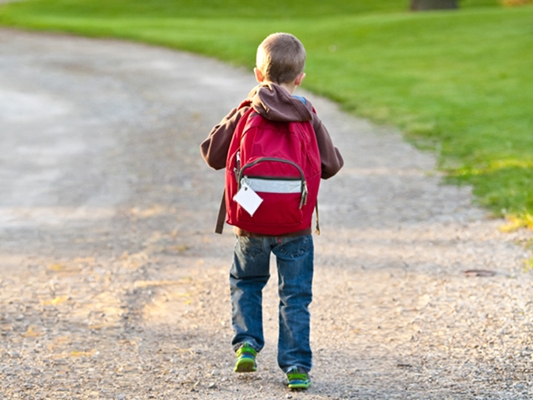Planning for after-school safety
Sep 10, 2019

What do your kids do after school? If your family is like millions of others across the United States, they might spend a few hours home alone before you are off work. This can be a stressful time for parents, but as students return to classrooms this fall, there are several preparatory steps you can take to reduce worry and keep your kids safe.
Are your kids ready to stay home alone?
First, check state guidelines. In Oregon, children must be 10 years old before parents can leave them home alone.
"In addition to laws about who can be home alone, consider if your children are comfortable at home alone. Can they take care of themselves and follow the rules?" says Ashlyn Howie, a family nurse practitioner at Adventist Health Portland's Gresham Troutdale Family Medical Center.
Getting home safely
First things first, review the rules of the road with your child. Before they walk home alone from school, walk the route with them several times. Make sure they watch for traffic and aren't distracted by any electronic devices. Teach them not to talk to strangers, or accept a ride from anyone they don't know.
If your children are old enough drive to and from school, talk with them about driving safety. Make sure they know the laws about friends riding in their car, and discuss how to avoid distractions like using their phone for directions or texting.
Oregon's distracted driving laws include fines for using hands-on electronic devices for navigation and social media use. The laws aim to reduce traffic accidents and keep people safe.
Make rules and set a schedule
Every family is different, but it can be helpful to outline a schedule ahead of time for your child's time alone in the house. Some things to consider are checking in with a phone call, chores, homework, TV time and snacks. Talk with your child and work together to create a schedule that works for everyone.
And if they plan to have friends over after school, talk with your child about who is allowed over how to make sure their guests know and follow household rules.
Emergency planning
Leaving children home alone is a big step for their growth and independence. You never want to assume something bad will happen, but it's important to prepare children with a plan ahead of time, in case anything goes wrong. The American Red Cross has some tips on how to prevent and plan for an emergency:
- Post emergency phone numbers somewhere children can see them, like the fridge. Put 911, parent phone numbers, and phone numbers for trusted neighbors or family. If they have a cell phone, also program the emergency contact numbers into their phone.
- Practice an emergency plan with different scenarios, such as a fire or an injury. Write the plan down and keep it somewhere easily accessible.
- Establish an agreed-upon safe place for children to go in case of an emergency.
"The most important thing for children at home alone is that they know to call 911 if there is an emergency or they need help," says Howie. "Your kids should know how to dial from a home or cell phone. They should also memorize their home address to share with 911."Talk with your child about the different types of emergencies, and when they should call 9-1-1, call you or maybe go to a neighbor's house.
Babysitting safety
If you have an older child babysitting younger siblings, consider enrolling them in a Safe Sitter class. Available for children in grades six through eight, the course teaches safety skills, first aid and rescue skills, CPR, and much more. You can learn more and find a course in your area at safesitter.org.
When to go to urgent care vs. the ER
Adventist Health is here to help if a family member gets sick or has an accident, no matter how big or small. Knowing where to go and when is important if your child, or any member of the family, gets hurt or isn't feeling well.
Urgent care is best for help treating a cold or the flu, as well as cuts or minor sprains.
The emergency department is best for serious accidents, and potentially life-threatening symptoms, such as chest pain or heavy bleeding.
Adventist Health has more advice on when you should go to urgent care and when it's time to go to the ER. In an emergency or when you're just not feeling well, every second matters, so being prepared on where and when to go can help.
Related articles

Eight Kid-Friendly Fourth of July Activities That Are Safer Than Sparklers
April 15, 2024

December is Safe Toys and Gifts Month
November 15, 2022

Helping your child with springtime allergies
March 8, 2022

The Gut-Brain Connection: How Your Mental Health Affects Your Gut Health
February 6, 2024

Gut-Healthy Foods: Eating for Your Digestive Health
February 6, 2024

How Looking After Yourself Benefits Your Whole Family
February 5, 2024